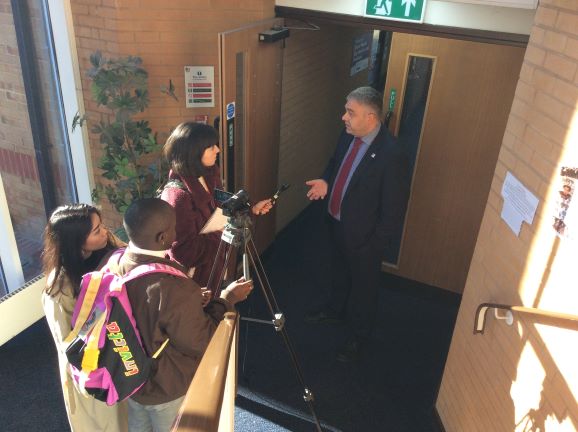Its been considered that todays generation of teenagers are increasingly paying less attention to the news and the world around. As the worked moved into an Internet age, teenagers, when they wanted to see the news, turned to this to get their quick fix.
However, Thomas Patterson report on American children and the news found that “Roughly one in seven older adults, one in eight young adults, and one in twelve teenagers are heavy consumers of Internet-based news.”
I believe that teenagers are turning away from the news due to the way in which it is brought to them. AS news outlets more into the modern age with online news and apps that young adults would pay more attention to the news. However, as Patterson’s study noted older adults are still higher consumers of online news then teenagers.
What could bring teenagers and young adults back to focuses upon the news and the world around them? In recent months there was an unprecedented amount of attention, by young adults, on the Kony 2012 campaign. The video was disrupted via YouTube and Facebook and was huge success. This is where I believe the saviour of news and the teenager’s attentions lie.
Media outlets need to again embrace the use of social media but they need to not just direct users towards their news content but to use the media as their sole provider.
I believe that if news producers created a 5-10 minute video broadcast on social media outlet YouTube to outline the news of the day, national and international then many younger people would pay attention to what is happening around the world. These short snippets of news will not only be enough to provide the audience with a round up but allows them to access it at their own time and to hold their attention.
However it is not just the format that the news is produce and reaches the audience that has to be changed. The way in which it is delivered is the main prospect that is making teenagers turn over from the news.
To confirm my suspicions I spoke to my 14-year-old niece, Olivia and asked why she refused to watch the news and why she wasn’t interested in the world around her. She responded: “The way in which they (newsreaders and reporters) talk doesn’t make me feel that it is for me. They are middle age upper class people in suits talking to middle class people. It bores me.”
Therefore, I believe that we should be looking at not just how the news is distributed towards today’s youth but who is offering it to them. I do not believe that many children today can really relate to many of the news broadcasters and writers today, this effectively means that they can not digest the news and therefore switch over to shows which cater for them and presented by people that they can relate to.
So how can teenagers relate with the people bringing them the news? As Olivia stated the image of the people presenting the news immediately turns teenagers off, however, reality shows like The only way is Essex or what not are shows that young people can relate to the stars as they dress, act etc like them.
I propose that many teenagers will be able to relate to people that they consider ‘cool’ whether that is someone who dresses with the fashion, is tattooed, has piercings who knows? As long as the reporter has relevant qualifications etc and their not someone in a suit that I believe teenagers just cannot relate to. Journalists don’t have to be snobby and believe talk down to people.
The communication used is obviously a major part of renewing relations with teenager and young adults. As a journalist myself I still find the news pretty damn boring when I’m watching and reading it and I’m pretty interested in the news. For many teenagers it can be like sitting through a boring lecture and being talk at by a parent.
If the newscaster or write has already grabbed the young audiences attention then now they have to hold it and the time for formal speaking is over. Many consider this a dumbing down of TV but young adults have always had their slang words over the years. Hopefully by using a young adult journalist to produce and bring the news to the young audience they will be familiar with the way in which young people communicate.
As long as the news gets across to the audience and the point of the article, investigation or what not is understood, does it really matter how the point was made or in what language?
You could say that producing news with informal language will produce young adults that will always communicate this way in later life but as so far teenagers are switching off from the news and politics, maybe by producing new innovative ways of communicating the news, rather then reliance on the internet then maybe younger adults and teenagers may take time to watch the news and start to learn about the world around them.





